-
Posts
2,792 -
Joined
-
Last visited
Content Type
Profiles
Forums
Gallery
Events
Articles
Posts posted by bill
-
-
Another early San Francisco piece from Wirth and Jachens:
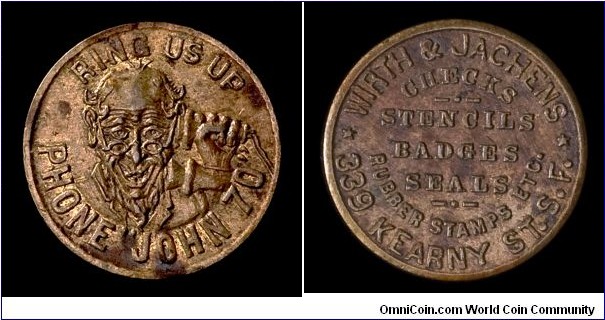
-
The official medals struck by the mint at the exposition were issued in silver, bronze, copper, and gold-plated. The last three are struck on the same base planchets with three different finishes applied. My set was likely assembled by a collector some years ago and then placed in their current box. I speculate that it is not an original set as issued and the jeweler's logo in the box is from a Tronto jeweler and likely dates to the late 1800s. Still, it makes for an impressive presentation. The silver and gold-plated versions of the medal are difficult items to find, the gold-plated perhaps the most difficult.
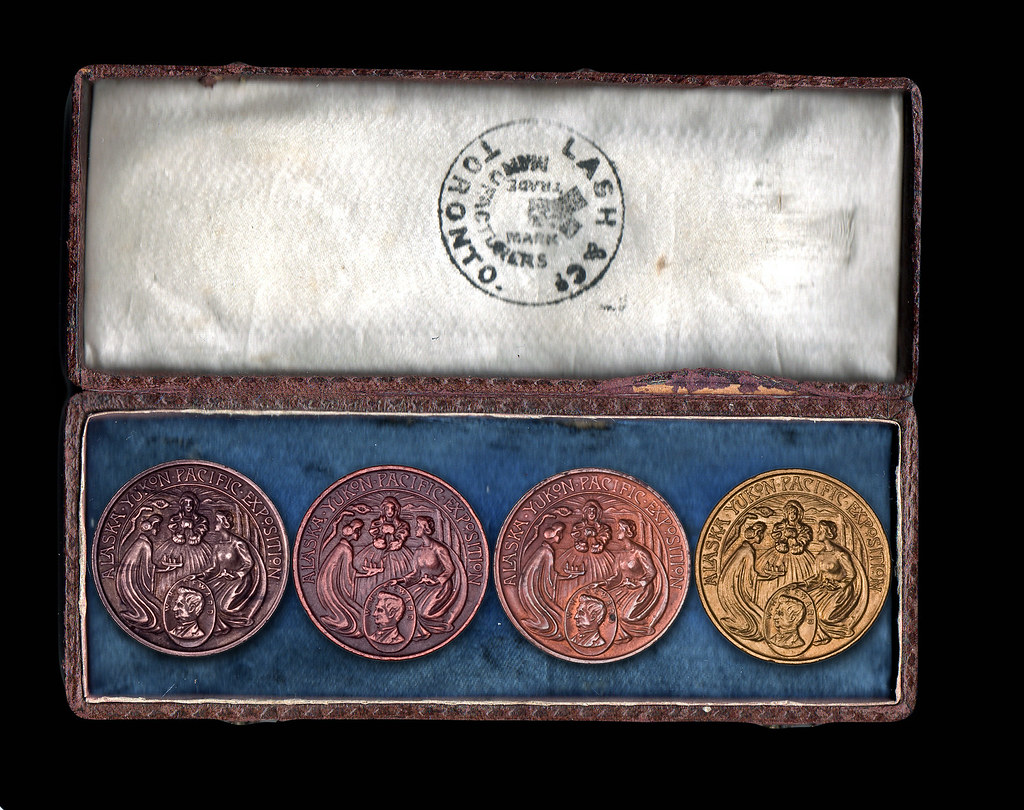
-
A fancier version of the watch fob pictured earlier in the thread:
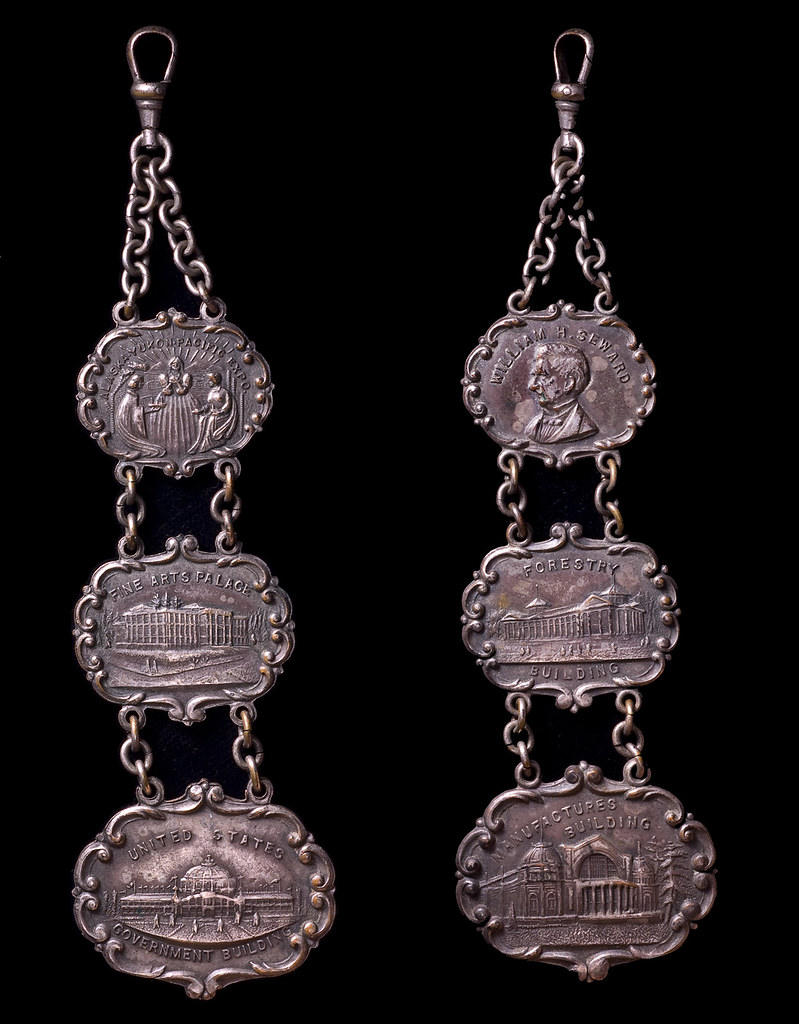
-
New additions to the AYPE collection:
A button or cuff link.
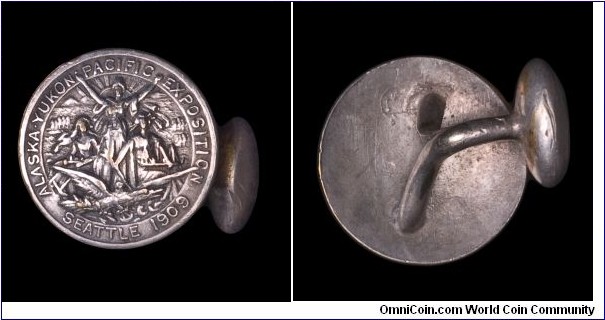
and an encased 1909 Indian Head cent (a mate for my 1909 VDB Lincoln cent)
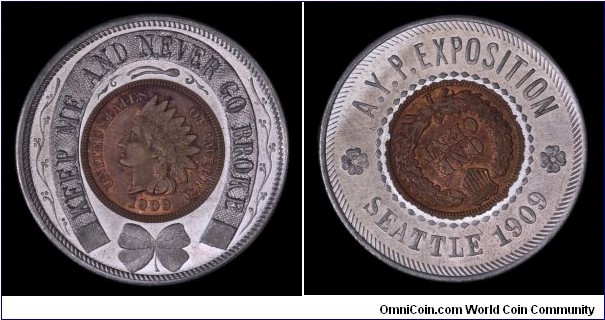
-
I met Daniel Carr at the ANA convention in Denver this Spring. He is an interesting guy and was helpful with my questions about striking medals, different finishes, and what can be done before striking versus after striking. It was useful to have a chance to discuss ideas with someone who has actually experimented with a real coining press. I have always been intrigued by a medal series he struck on his Grabener coining press that he purchased in a surplus auction from the Denver Mint. In restoring the press, he found a number of struck coins, medals, and coin blanks inside the press. The full story can be found in his web site, http://www.moonlightmint.com/artifacts.htm. After meeting Daniel, I had to have one of his commemorative medals struck using the blanks found inside the press. I selected a quarter blank or the 25 medal. 248 quarter blanks were found inside the press, 213 were struck and encapsulated by ANACS. An accounting of all the Grabener Press medals is found on his web site, http://www.moonlightmint.com/dc-coin_grabener_list.htm. A fun, numismatic related addition to my collection.
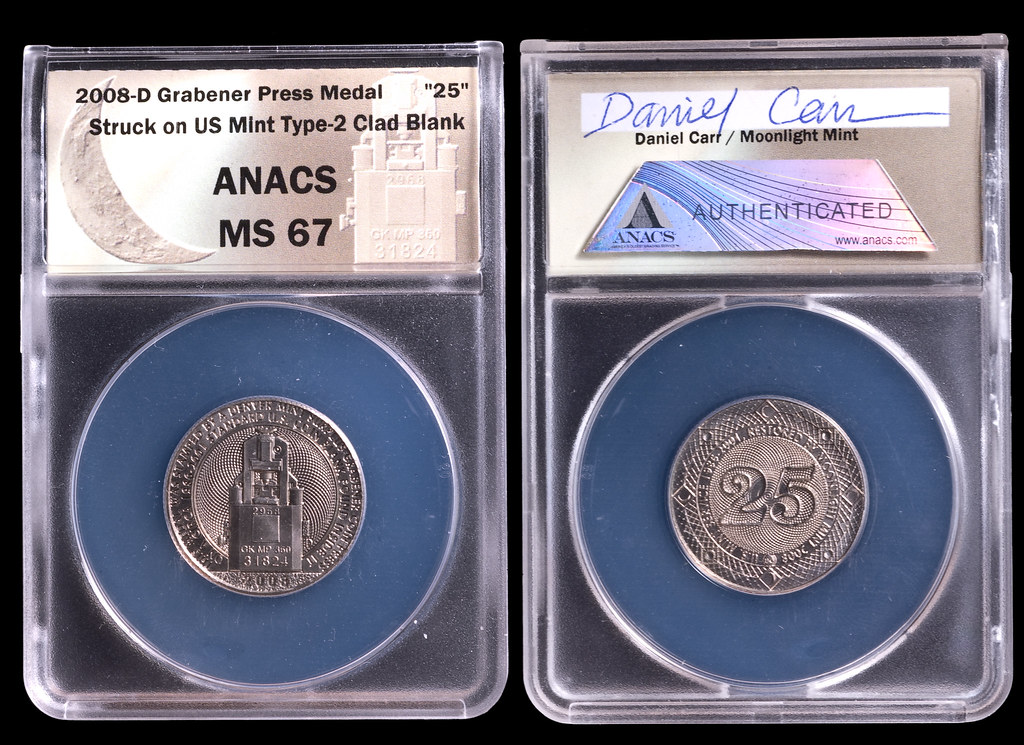
-
Bill that's a great piece for your collection. You won't see many of those showing up on ebay or at the local show.
Certainly not mine (on Ebay that is). This one will be passed to my grandson for his collection.
-
The current ANA president, Tom Hallenbeck is the only ANA president who's father preceeded him as an ANA president. It was a moving moment last summer in Chicago when his father performed the ceremony installing him as president. Tom had a personal medal struck to commemorate the father-son presidencies and he presents them as gifts to individuals who serve the ANA. I was fortunate enough to have received one in Denver for serving on an ad hoc IT advisory committee for the association. Its a great addition to my collection. I believe 100 were struck.
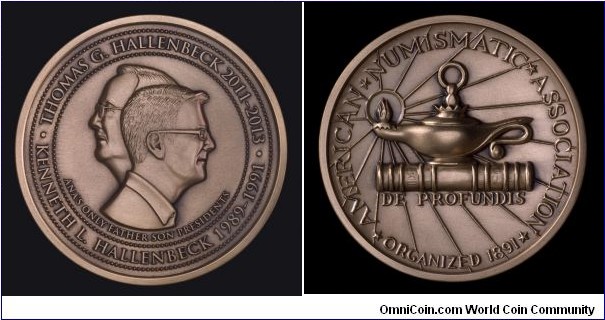
-
A number of events celebrating the end of the Spanish-American War were held around the country and may produced medals and badges of various sorts. One elusive piece for so-called dollar collectors is a 14 mm, gold-dollar sized medal, HK 643. I am particularly taken with the wonderful dove on the obverse with an olice branch in its beak. I finally acquired an example in its orginal badge.

I actually acquired two pieces with different style crosses encasing the medal. The second went to a friend for his collection. The other cross was signed "J. H. Diehl, Philadelphia" and I suspect both were made by Diehl based on another Lord's Prayer piece I have in my collection.
-
Another beauty.
-
I'm assuming the middle piece is closest to the actual appearance in hand. Nice example of the importance of light in creating a photographic image.
-
I would use axial lighting and vary the angle of the light to get the desired result. Then I would lighten the image as needed.
-
I believe places like the British Museum made similar casts as study pieces for collectors, researchers, artists, etc. in the 1800s. I'd start with trying to track down the originals (assuming not all are in the Tassie collection) to determine a source for the casts.
-
Photographing any subject raises questions of what is real. A photograph is certainly not real as it is a reproduction of an object in a blend of light, color, and shadow. Do you choose an image that shows what the coin looks like in hand? Do you choose and image that reveals all the defects present on the coin's surface? Do you find a happy medium with the understanding that no two people share the same vision and will likely see the same object somewhat differently from one another? I like to see all the small imperfections when shooting for my collection catalog as they can be used almost like finger prints if I ever needed to prove a coin was my own. If I want to display the coin, I want a picture that shows the struck details, color, luster, and diminishes the imperfections. Both are accurate photographs, but they tell eary different stories.
-
We will have to plan a trip to Dayton and go through the archives. They should have it established now in a location that can be easily visited by the public.
-
The jeton also evidences being struck with either dirty or deteriorating dies (or both). The `C' in Christianiss (obv) is `filled', suggesting part of the die has chipped and some parts of the reverse legend arw faint suggesting grease or dirt filling the die. It's particularly evident in the exergue.
I think they had a real problem with dies rusting quite rapidly. I believe it is more common than seeing pieces without evidence of rusting.
-
I'm guessing the signature is that of Cataldo Papaleo, a southern California sculpture associated with El Monte's Classic Bronze Corporation. He was active in that time period.
-
What I find interesting is that my album has the same filled slots and empty slots as Robert's. He has managed to find two additional medals to fill empty slots. I found an auction reference to another album that had the same filled and empty slots as our two albums. There must be a story here about the series.
-
Spectacular! I love associated ephemera such as this piece.
-
I really like this series. There is an elegance to the quality of the portraiture and the simplicty of design. The worn examples retain that same feel.
-
-
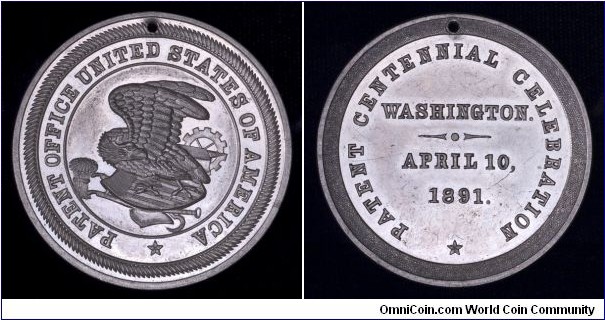
The 1891 celebration of the U.S. Patent Office was a year late. Participants and visitors received a pure aluminum medal as a souvenir. A number of different committees and distinguished guests had distinctive ribbons to identfy their role. The 47.4mm medal is available without a hole. I suspect the holded examples were suspended from one or more of the distinctive ribbons, although I have never seen one. The medal is typically described as white metal since 1891 is a bit early for the regular use of aluminum, but the centennial records specifically describe the medal as pure aluminum: "A handsome medal of pure aluminum bearing the seal of the patent office and the inscription * ' Patent Centennial Celebration, Washington, April 10, 1891," was one of the souvenirs of the celebration."
-
Regardless of its age, neat medal.
-
Good luck with the search. Life has a way of dealing us ups and downs, but it all comes out for the better in the long run. Hang in there and don't let the SOBs get you down.
-
Nice project. I love the images.


Die Sinkers and Mint Store Cards
in Exonumia Virtual Museum
Posted
I love the early pictorals from San Francisco, especially this one from J.C. Irvine. Irvine later bought Wirth and Jachens.